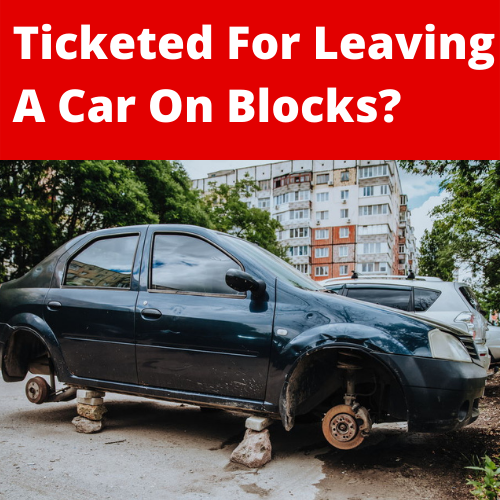
“City to crack down on inoperable vehicles,” the headline read. Apparently, in 2019, the city of Springfield passed a proposal allowing the city inspectors to cite abandoned vehicles.
They go after these cars by demanding that they have a valid license plate. When a car is properly licensed, that license verifies that taxes have been paid on it. It also verifies that the car is operational and has passed a mechanic’s inspection.
These municipality ordinances prevent people from turning their front lawns into graveyards for dead cars. One abandoned vehicle can bring down the value of the entire neighborhood.
That said, we have a neighbor who has one truck sitting on a jack stand and an RV with no motor. It’s been this way for three years, and we’re having difficulty getting it towed.
You’ll need 4 jack stands to lift the entire car.
How Long Can You Leave A Vehicle On Jack Stands?
You can leave your vehicle sitting on jack stands for years.
When a vehicle is properly supported on jack stands, it can sit there for an extended period. You want to ensure that the jack stands are sitting on solid ground, such as concrete or packed gravel. You can also set lumber or thick plywood under a jack stand if you need to park on asphalt or soft earth.
The jack stands should be properly positioned at your vehicle’s jack points. These jack points are directly behind your front wheels and in front of your rear wheels (there are 4 jacking points). This provides the most secure setup. When appropriately positioned, the jack stands will not cause any damage to your car’s steel frame from your vehicle’s weight sitting on them.
Just make sure to purchase jack stands that are rated to support your vehicle’s weight.
If you have ensured that your vehicle is secure enough to work underneath, then you can be reasonably sure that it is also safe to leave on jack stands overnight.
You can also use wood blocks to support your vehicle in conjunction with four jack stands. Double-check that everything is secure, and keep children and pets away.
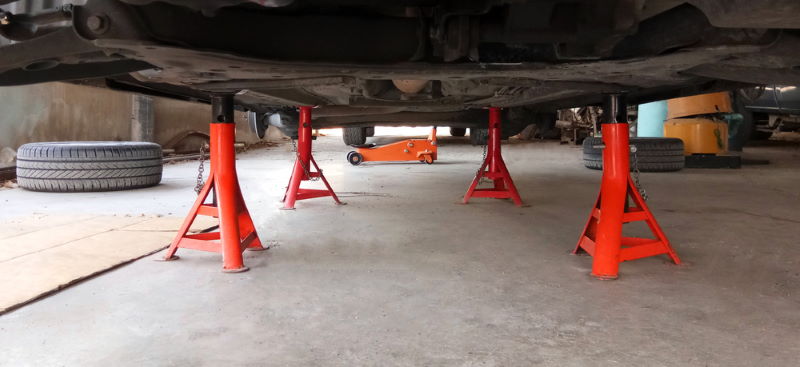
Will I Get A Ticket?
It depends on how aggressive your code enforcement is in your city. In our city, the code reads:
Fully operable, completely assembled, supported by inflated tires, and not supported by blocks, jacks or similar supports, except that such vehicles may be safely leveled to maintain the proper flow of propane or other gas to built-in appliances;
Many suburban communities are strict on this. I know one small neighborhood where they patrol each street weekly, looking for things they can write tickets for. It seems petty, but these folks are fiercely protective of their home values.
Ultimately, the neighborhood you are in matters greatly. If you are in an upscale neighborhood, they will not ignore a disabled car sitting in your yard. That is going to be reported immediately. However, if you live in a neighborhood where there are 3 other project cars sitting in driveways, your project will blend in.
However, most cities are not going to be that petty. Unless a neighbor complains, they aren’t going to do anything about your car sitting on jacks. They have more significant issues to worry about.
Before you get a ticket, you will generally be given a 7-day warning to fix the car. This gives you enough time to drag it into the garage and away from prying eyes.
This also means that you can start your project and then pivot if someone calls it in.
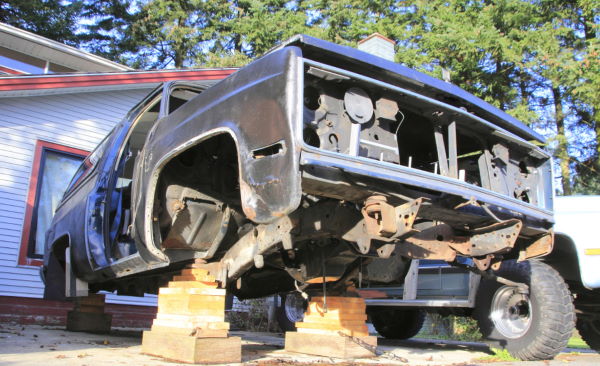
Is It Best To Store A Car On Jack Stands?
You just got orders to ship out to fight for your country? What’s the best way to store your car? Leaving it on jack stands is not the best way.
A lot of folks have heard of flat-spotting. This is where tires sit so long in one position that the bottoms of them form flat spots. This can ruin your tires, and as expensive as tires are, it makes sense to avoid flat spots.
Because of that, some folks suggest leaving your vehicle raised on jack stands to protect the tires.
Raising your car for long periods of time leaves your springs in an unloaded position, which is less than ideal. And most vehicles cannot be supported by the axles (a few can, but not many modern cars allow that.)
So if you are worried about flat-spotting, consider getting some tire saver pads. These are easier to use than raising your car into the air.
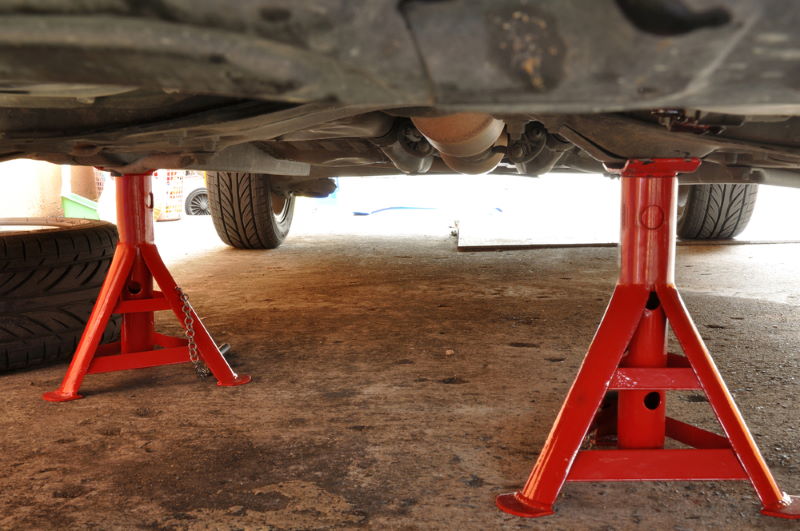
Jack Stand vs Floor Jack
As we’ve covered in detail, jacks can only be used when lifting your vehicle off the ground. After your car is raised, a jack stand should be placed and the vehicle lowered onto it.
Scissor jacks and hydraulic jacks are likely to fail, especially when left unattended for a long period.
A jack may be able to handle a load for a while under perfect conditions. But conditions are never perfect. A scissor jack is apt to fall over. And a hydraulic jack will almost always leak down.
A floor jack and a bottle jack are both examples of hydraulic jacks that will likely fail if used to hold up a car for several days. The internal seals are designed for this.
Jack stands cannot lift vehicles. They are a safety tool to hold your vehicle for working underneath it.
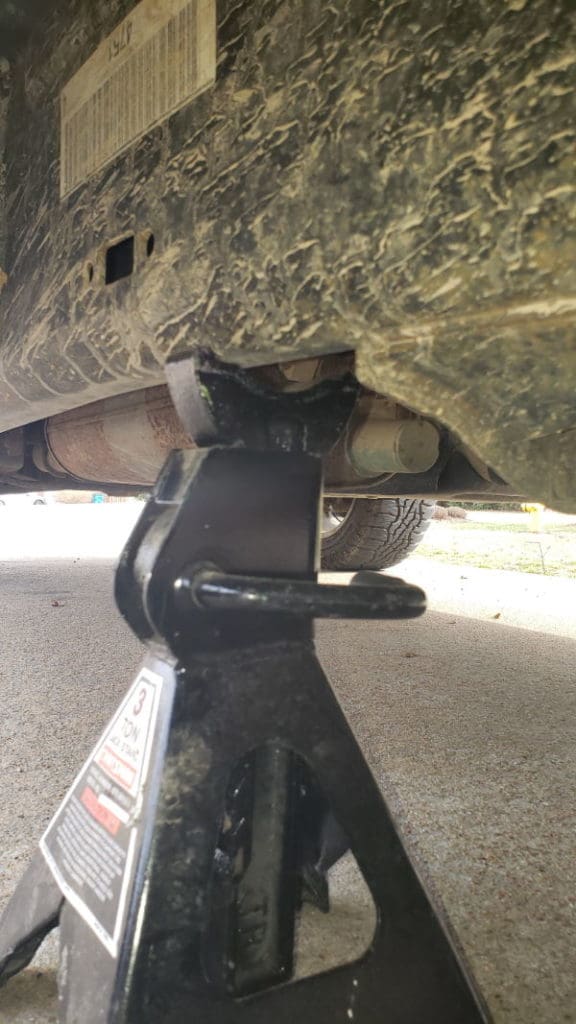
Is It Bad To Leave Your Car On a Jack?
It is a bad idea to leave your car on a regular jack. A hydraulic jack will leak over time, and as the jack falls down, the car will eventually hit a point where it slides off of all of the jacks it is one and falls to the ground. You don’t want your car to be uneven from floor jacks leaking down.
Jacks are designed to lift a car. They have many moving mechanical points. Each one of those points can be a point of failure.
In Edmonton Canada, they will cite you for leaving a car unattended on jacks. For we Americans, that is a crazy concept. But it underscores how dangerous jacks are when used without jack stands.
How To Put A Car On Jack Stands
We have covered this in detail, but let me give you a few easy steps.
- Park your car on level ground.
- Apply the parking brake.
- Chock the wheels opposite of where you are working.
- Raise your car at the correct jacking point
- Install a jack stand and lower the car until the full weight is resting on the stand.
- Repeat the process, working your way around the car in a clockwise motion to raise each corner.
Once the vehicle is supported by four jack stands on a level surface, it should be fine to leave for an extended period. If you are lifting just one end, you will only need two jack stands and wheel chocks for the opposite side.
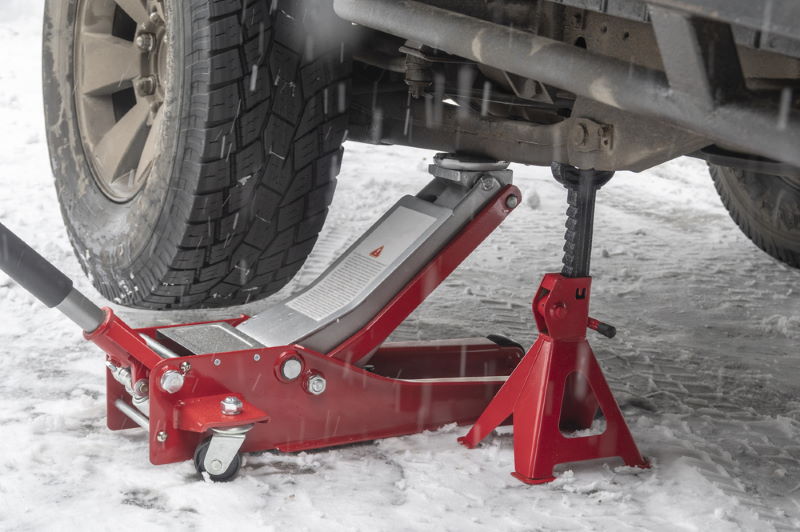
How To Keep From Being Towed
If you are trying to work on your car and are worried about being ticketed and towed, there are some ways you can play the game in your favor.
Hide The License Plates
For example, you can park your car far away from any major streets making it difficult to see if it has proper licensing. Most state inspectors either have to get a warrant or have permission to walk onto your land. Without either one of those things, they are forced to peer at your car through binoculars. It’s not worth the hassle.
Move it 1,000 Feet
Some cities only require that you move the car 1,000 feet once you receive a citation. Then it can sit in the new spot until cited again. This creates a never-ending same of whack-a-mole that plays out in your favor.
Hide It In Your Garage
If you are working on your car in your garage, then most municipalities will not care. You can leave it jacked up for years in the privacy of your garage.
Keep The Wheels On
My first car had a massive issue with the brakes constantly bleeding down. I spent months trying to fix it. Whenever I was done working on it, I would put the wheels back on it. Sure, it was left jacked up, but to the passerby, it would be difficult to tell that.
Dealing With Abandoned Vehicles In Your Neighborhood
Maybe you are on the other side of the table, and you need your neighbor to remove their eyesore of a project that’s been sitting in their yard for the past year. How can you deal with abandoned vehicles?
You’ll need to start by working with your local laws on vehicles. If you can’t find the laws with a simple online search, then call city hall or the mayor’s office.
If the car is parked on a city street or is blocking your driveway, it will be easier to get it towed.

As you read ordinances, focus on those talking about disabled vehicles. A disabled vehicle is one that is missing engines, tires, doors, or any other clear features a vehicle needs to drive.
Most cities require that disabled vehicles be kept inside of a garage. There is also normally a limit on how long they can be left outside, from 72 hours to 2 weeks.
If you know who owns the vehicle, you can present them with a copy of the laws and see if they will comply with them. Sometimes they are just unaware of the limits.
That said, I’ve never had any luck asking my neighbors to do anything. And now, if you have to call them in, they will know who it is. I hate to make enemies of my neighbors. But if you want to talk to your neighbors, try reading this book on Neighbor Law.
Instead, it is better to call it in anonymously. This tends to result in the problem getting resolved without the neighbor knowing who is at fault.
 Skip to content
Skip to content

